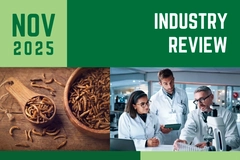
- Industry news
Industry news
- Category news
- Reports
- Key trends
- Multimedia
Multimedia
- Journal
- Events
- Suppliers
Suppliers
- Home
- Industry news
Industry news
- Category news
- Reports
- Key trends
- Multimedia
Multimedia
- Events
- Suppliers
Suppliers
Healthy or nutritious? Consumer beliefs about nutrients cause of front-of-pack claims confusion

01 Apr 2019 --- Health claims and nutrition claims are challenging for consumers to differentiate, according to new research from the University of Surrey, published in Nutrients. Although regulatory experts can pinpoint the difference, consumers often have pre-determined beliefs about nutrients and their relationship with health outcomes which can lead to label misinterpretations. The researchers suggest that policymakers should consider better educating consumers so that they can understand and respond appropriately to claims in the marketplace.
“Labeling food products with health claims could help people make better food choices but what we have found is that they don’t always interpret claims in the way we assume they do. It is important that consumer perspectives are taken into consideration when developing policy,” notes Professor Monique Raats, Director of the Food, Consumer Behaviour and Health Research Centre at the University of Surrey.

Both regulators and industry need to work together to make information available, to ensure consumers’ knowledge and beliefs are correct and well-informed, so they can understand and respond appropriately to claims appearing on pack, Professor Raats tells NutritionInsight.
Nutrition claims are claims that state that a food contains a particular element. while health claims imply a health benefit that could result from consuming a specific food.
EU Regulations, such as the Nutrition and Health Claims Regulation, seek to eliminate unsubstantiated and potentially misleading claims from foods and provide an appropriate level of consumer protection.
 The level of evidence needed to support a health claim is more extensive as it needs to substantiate that a certain health benefit exists. However, there is doubt as to whether consumers make a distinction between these two types of claims.
The level of evidence needed to support a health claim is more extensive as it needs to substantiate that a certain health benefit exists. However, there is doubt as to whether consumers make a distinction between these two types of claims.
How do consumers misinterpret claims?
The team of researchers led by Professor Raats examined whether consumers from the UK, Germany, the Netherlands, Spain and Slovenia were able to distinguish among various health and nutrition claims on food items.
The findings showed that when nutrients in the claim are familiar and personally relevant to consumers, there is potential for them to “upgrade” the nutrition claims to health claims simply based on their previous knowledge.
Regulators, educators and health care professionals need to consider providing information to the public to help them understand what the different types of claims mean, according to Professor Raats. Understanding the difference between nutrition and health claims may help consumers make better-informed food choices.
“Previous research showed that consumers’ interpretation of health claims is mediated by their personal causal model of health. Consumers draw inferences that go beyond what is claimed by extrapolating from their personal causal model of health. This prior knowledge is used to interpret the claim and draw inferences about overall health benefits that go beyond the information in the claim,” Professor Raats says.
She notes that efforts to improve consumers’ understanding and interpretation of health claims must address both their wider causal models of health and their knowledge of specific claims in order to ensure that existing claims are appropriately interpreted and future claims relating to newly approved functional ingredients are potentially more acceptable to consumers.
Raats suggests the implementation of “a well designed and targeted consumer information program,” possibly supported with resources such as authoritative, trusted websites, to improve consumer awareness and understanding of the concepts used in nutrition and health claims. Policy efforts should also focus on ways to improve motivation and interest in healthy eating among consumers which could be increased by adopting appropriate communication strategies.
 “Future research should seek to explore the outcomes of this study in real-world shopping environments. As new ingredients come on to the market and new science about the relationship between ingredients and health becomes available, information sources will need to be kept up to date,” says Professor Raats.
“Future research should seek to explore the outcomes of this study in real-world shopping environments. As new ingredients come on to the market and new science about the relationship between ingredients and health becomes available, information sources will need to be kept up to date,” says Professor Raats.
Labeling discrepancies are increasingly coming to the fore, highlighting the need for better policies to be put in place. According to a Queen Mary University of London study, published in the journal Appetite, the chances of consumers opting for healthier and more sustainable canteen meals rise significantly when those meals are labeled with a traffic light system. The researchers note that the traffic light system “works intuitively for most people,” underlining the idea that such a labeling system could spark a shift towards more positive nutritional and environmental habits.
Last month, KIND Healthy Snacks (KIND), backed by several health and nutrition experts, filed a citizen petition to prompt the US Food & Drug Administration (FDA) to amend its nutrient content claims regulation. The existing regulation notes the quantity of a nutrient added to a product, instead of the product’s overall quality, which could lead to consumers purchasing products that may be perceived as healthy, when actually they are not. KIND has also requested that the agency allow nutrient content claims on items that contain a “meaningful amount of healthy ingredients,” such as vegetables and whole grains.
By Kristiana Lalou












